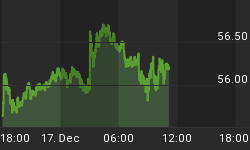US non-farm payrolls rose by 169,000 in August from a revised 242,000 reading in June, while the unemployment rate fell to 4.9% and average hourly earnings dropped to 0.1% from 0.4%. The upward revisions for the June and July payrolls totaled 44,000, while the average hourly earnings growth was the lowest since February 2005. The unemployment rate was the lowest since August 2001.
Services boosted by retail strength
Services industries created a net increase of 156K jobs from 240K in July, this time the bulk of which emerged from a 26K increase in healthcare. Factoring in education, both categories aggregated a 43K increase. Jobs creation in the retail sector slowed to 11.8K from 58K, while leisure and hospitality jobs increased by 34K after rising 37K in July. Despite the slowdown in services jobs, the 3-month average rose to a 4-month high of 196K.
Manufacturing deeper in the red
Manufacturing job losses stood at 14K in August following a revised decline of 6K jobs in July. Auto jobs fell by 8K, totaling the number of losses to 37K since May. This time, the Bureau of Labor and Statistics did not attribute the losses in the auto sector to larger than "usual shutdowns for annual retooling", which indicates that further losses are here to stay especially that the Big Three auto makers are offering aggressive discounts to the extent that the practice may start to spill onto profitability.
Construction employment, however, had a solid showing as 25K new jobs were added last month and 297K jobs were created over the past 12 months. In the coming months, we could see an increase of 40-50K construction jobs per month which could help the overall payrolls figure.
60% chance that Fed is done, 40% of a rate cut
The projected explosion in weekly jobless claims from Louisiana over the next months should eventually weigh on layoffs and lift the number of jobless by as much as 1 million in less than 3 months in the household survey. The negative impact of rising gasoline prices is starting to be felt by households. Oil analysts say that current gasoline prices in the US are at a level where equivalent prices of crude would be at $120 per barrel, rather than the current $70 as refineries remain handicapped in producing the right kind of grade gasoline.
The combination of increased layoffs and lower disposable income should shed fresh doubt over the Fed's tightening campaign. According to Market News International poll, 57 of the 155 participants forecast that the path of official interest rates over the remaining three Fed meetings would be 3.75%, 4.00%, 4.00%, while 39 predicted 3.75%, 4.00%, 4.25%. The next most popular predictions were 3.5%, 3.75%, 4.00% (14 participants) and 3.75%, 3.75%, 3.75% (12 participants).
We think that the Fed will keep rates unchanged at 3.50% in its September 20 meeting as it further mulls the spillover effects from Hurricane Katerina, that extend towards prolonged ports closures, lengthened power failures and transportation logjams that drive up the price of agricultural commodities. Should the damage stabilize then the Fed could resuem tightening in December. Yet we think the most plausible scenario is for the Fed to leave rates unchanged at 3.50% (60% chance) into the end of the year, and a 40% chance of a rate cut in November or December.
It is true that a negative 10-2 year yield spread has constantly lead to economic slowdowns, slower corporate profits and even a recession. But it's just as crucial to add that these recessions were led by additional catalysts. In spring 2000, the yield curve began inverting into the course of the year, leading to a slowdown that was later converted into a recesssion by the September 11 attacks. Today, the yield curve could very well continue flattering to the extent of forming an inversion until an economic slowdown is rendered into a recession by Hurricane Katrina. 10-2 year spreads have risen from 8-bps last week to 24 bps. A renewed decline in the spread could pave the path for an eventual inversion that may only be stopped by a clear intention from the Fed to end its tightening campaign.
The charts below show that the economic cost of the Hurricane are expected to reach as much as $100 billion in damages, making it the second biggest after Hurricane Andrew in 1992, which cost $26 billion. Nonetheless, oil prices at the time stood at $20 per barrel, less than a third of the current price of $69 per barrel. Other major hurricanes such as Hugo (1989) and Ivan (2004) -- both of which cost $14 billion, prevailed when oil prices stood at $20 and $43 per barrel respectively. This means that the resulting upward push in oil prices following the current disaster will lift gasoline prices beyond the already steep price of $3 per gallon prevailing nationwide.

Fed not good enough for the dollar
The US currency continues to sustain fresh damage as the rising economic losses of Hurricane Katrina trigger the risk of full fledged oil shortage and reduced economic activity. The dollar's drop to 3 month lows against the euro and the British pound has been most pronounced as markets challenge the notion of further Fed hikes-- thus destabilizing the foundation of this yea's rally. Aside from the interest rate-related argument of a lower dollar outlook, the eroding savings rate will induce further acceleration in the current account deficit. With personal savings falling to -0.6% as a percentage of disposable personal income in July, the rate hit its lowest level since 1959. A curtailment in rate hike expectations and a boost in the external imbalance makes for a new recipe of a negative dollar outlook.















